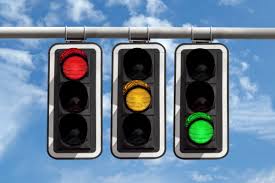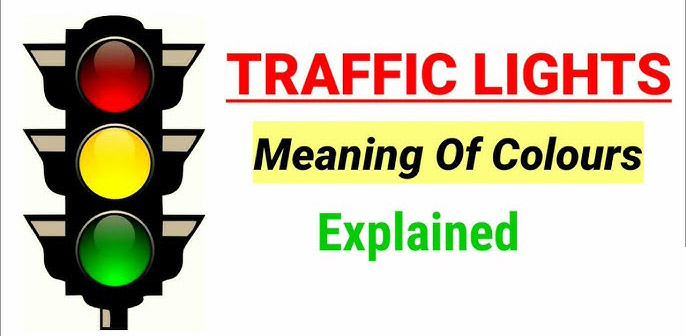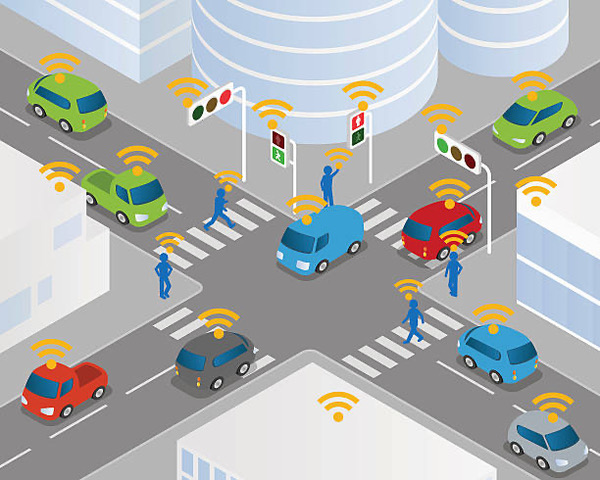The growth of cities worldwide demanded better traffic control systems. The first traffic lights were red and green. Later, the need for a warning light led to the incorporation of the color yellow.
In this article, we provide a brief explanation of the meanings and uses of the different traffic light colors.
Quick Primer: What Are Traffic Lights?
Traffic lights are often near pedestrian crossings or road intersections to regulate vehicles. The three colors, red, green, and yellow, are the primary traffic light colors worldwide. Each color has different instructions for drivers and pedestrians.
In 1868, traffic lights were first used in London to replace police officers in traffic control. Initially, a traffic officer would manually change the commands.
Lester Wire, a policeman, was the first person to invent the electric traffic light (1912) for Salt Lake City, Utah. William Potts created the first three-color traffic light in 1920 in Detroit. Potts added a yellow (caution) light to the other tree colors. In 1922, automatic timers replaced the traffic officers.

Why Red, Yellow, and Green? The Science and Psychology
Road management systems use traffic lights to facilitate the efficient flow of vehicles, ensuring road safety. But for this system to work, all road users should know the meaning of the various traffic light colors. Additionally, there is a scientific and psychological reason as to why most countries use these three colors.
Visibility & Color Theory
There is a scientific and psychological reason as to why most countries use these three colors.
| Scientific motive | Psychological factors | |
| Red | Most vibrant color and has a long wavelength. | Danger, urgency. |
| Easily stands out and is visible from a distance. | Grabs your attention quickly. | |
| Conditions such as dust or fog will not interfere with its visibility | ||
| Yellow | Yellow is a mixture of green and red, and is easy to spot. | It means slow down and prepare to stop. |
| It gives a brief warning that the lights are about to change. The driver and pedestrian must decide whether to proceed or wait. | Yellow is between red and green in the traffic light alignment. | |
| Green | It has a shorter wavelength. | Green means “go”, but you need to confirm first. |
| The eye processes it easily. | It has a calming effect, telling the brain to go. | |
| Most people perceive it as safe and calm. | Green is at the bottom. |
Cultural and Industrial Origins
Traffic signs are not for vehicles only. Don’t be surprised to see railway signals using red (stop), yellow (slow down), and green (keep going). You might also come across other colors, such as white(safe to back up) or blue (workers on site). Other areas with traffic lights include airports and parking garages.
In the U.S, the Federal Highway Administration created a simple manual, setting the rules for road signs and signals. The Manual on Uniform Traffic Control Devices (MUTCD) covers the following.
- The meaning of the colors: red (stop), yellow (slow down), and green (go).
- Gives the duration of each traffic light.
- Manual update is done every few years.
The Vienna Convention on Road Signs and Signals of 1968 became the backbone of traffic rules for many countries. The agreement made it mandatory for traffic signs to use the colors red, green, and yellow. Using the manual makes it easier to follow traffic lights when you travel to other countries. However, some nations, such as India and China, added a few features.

Meaning & Use of Each Color
The three colors are easy to see and understand. Drivers and pedestrians can make quick decisions.

Red – Stop
- Steady Red: Means a complete stop. All vehicles must halt completely before the stop line or intersection. Any pedestrian who wants to cross the road can now do so.
- Flashing Red: It means stop, and as a driver, you should only proceed if the way is clear.
- Red Arrows: It means you should stop. For example, a red right arrow means you should not make a red turn. Wait for the green or yellow arrow to appear.
- Flashing Red Arrows: It means you must make a complete stop and wait for any traffic or pedestrians.
Yellow (Amber) – Caution / Prepare to Stop
- Steady Yellow: It is a caution to road users that the light is about to change to red. Though the duration of the yellow light is generally brief, drivers will have enough time to stop without dangerous braking.
- Flashing Yellow: It means you need to slow down and be alert.
- Steady Yellow Arrow: If you are not already at the intersection, you should stop, as a red arrow is about to appear.
- Flashing Yellow Arrow: Only proceed when it’s safe. However, you must give way to pedestrians already on the crosswalk or vehicles with the right of way.
Green – Go
- Solid Green: It signals the cars to start moving, whether forward or turning. However, drivers must be keen to check if there are any pedestrians still crossing and give them the way.
- Green Arrow: It directs the vehicles to proceed in a specific direction, even if the signal is red. Alternatively, a green arrow might require vehicles to turn in a different direction only.
Variations & Special Signals
All these colors are meant to keep you safe on the road. Each color tells the drivers or pedestrians what to do. All the red signals, whether flashing or not, mean stop, wrong way, or do not enter. Yellow are warning signs such as cattle ahead, railroad crossing, or two-way traffic.
Turn-on-red means a driver, after stopping and careful consideration, can turn in the direction nearest to them. In the 1970s, turn-on-red rules were a way to save fuel in Canada and the United States. However, some states in the two countries, in a bid to reduce pedestrian and cyclist accidents, banned turn-on-red.
In some countries, there are additional advanced signals. A white arrow means a vehicle can only proceed in that specific direction. White gives commands that drivers must obey, and they include speed limits or lane usage. Double red, whether it is lights or arrows, reinforces the command to stop.
It is common to find black letters on white backgrounds. Black is easier to read and highly visible. If you are in Germany, you are likely to come across the ampelmännchen (the little red traffic man). You can cross if the signal shows the ampelmännchen, with a wide-brimmed hat, midstride. Stop if you see the same little man with arms outstretched.
Color‑Blindness & Design Considerations
If you suffer from red/green/yellow or any other color blindness, your perception might be different. However, instead of identifying traffic lights according to color, you should use positioning. But what happens when the lights are in a horizontal position?
Current technology includes shapes to signal the correct response. If these shapes can be added to traffic signs worldwide, it would solve a major problem for those with color blindness.
The backgrounds of the signs can also help people with color blindness. A white background is for regulatory signs. Warning signs have a yellow background, while a red background is for yield signs.
The Future: Smart Traffic Lights & Innovations
Smart traffic lights have features such as cameras or infrared sensors at various intersections. These features gather data such as how many vehicles are on the road and how congested a section gets. After centralizing this data, it becomes easier to predict a pattern and come up with a way to deal with traffic.
Vehicle-to-infrastructure cooperation allows easy communication between your car and what is happening around. You get alerts in case of accidents, construction zones, or road closures. Once you can get the alert, you can take preventive measures like avoiding that particular route.

Conclusion
Knowing the meaning of traffic light colors is crucial to avoid accidents and ensure road safety. Knowing the various meanings of the traffic light colors makes it safe for you and the other road users. Jackwin manufactures high-quality traffic signs that meet MUTCD standards. Contact us for traffic sign requirements.
FAQs
-
What if I enter on yellow?
Be aware of vehicles approaching from the intersection. However, the best solution is to stop, unless it is unsafe.
-
When is turning on red legal?
The only time you should turn on red is if you see a green arrow showing you the right of way. In all other circumstances, you should stop.
-
How long does yellow last?
The MUTCD specifies that a yellow light should remain between three to six seconds. However, the duration is only sufficient for “non-turning” lanes.
-
What happens at a malfunctioning traffic light?
When the traffic lights malfunction, you should come to a complete stop. Before proceeding further, check that there is no traffic in all directions.
-
Why do some countries show red + yellow together before green?
In countries such as the UK, red and yellow lights appear together before the green light. The combination alerts you, as the driver, to prepare for movement.
-
What do traffic signal countdown timers indicate?
The countdown timer indicates how much time you have before the light changes. It helps to reduce start-up time and impatience, which can lead to risky behavior.
-
Why are there special lights for buses and trams?
Special lights help give priority to trams and buses, even when the traffic light is red. When trams and buses move smoothly through traffic, there is less congestion on the roads.


-80x69.png)

